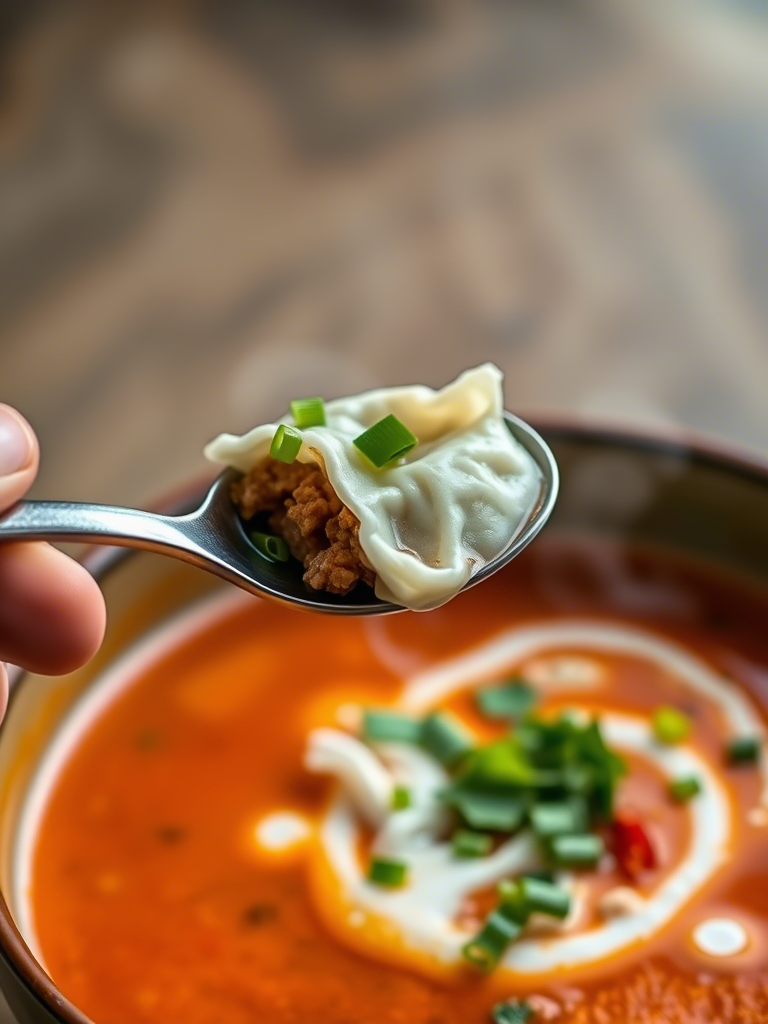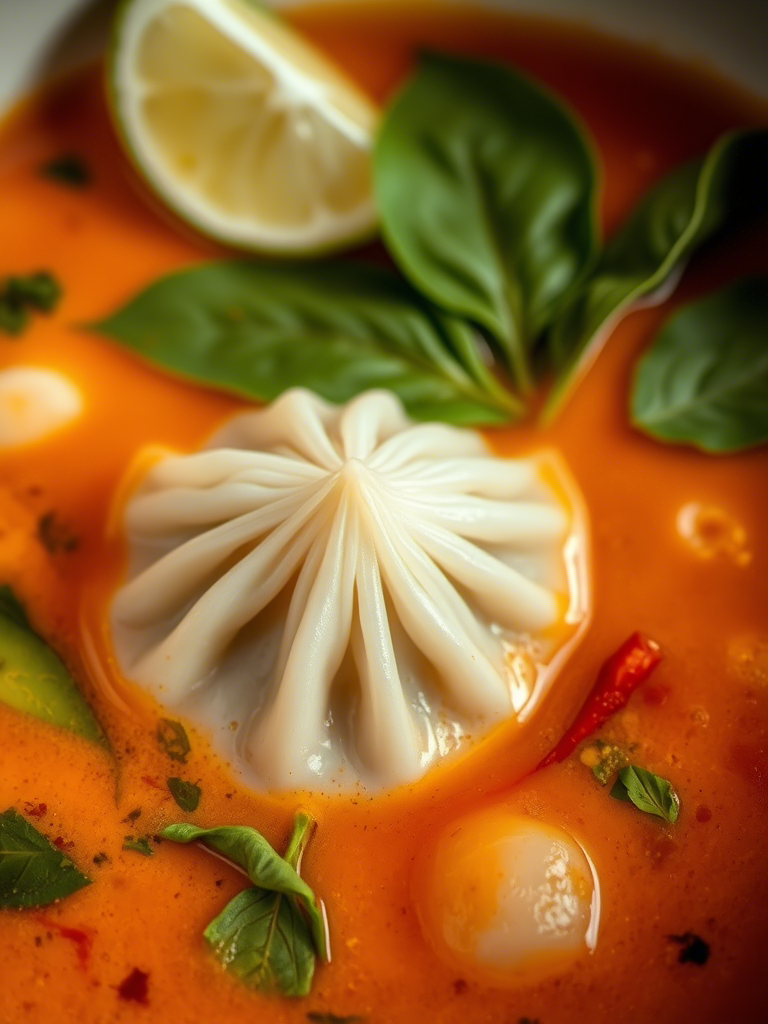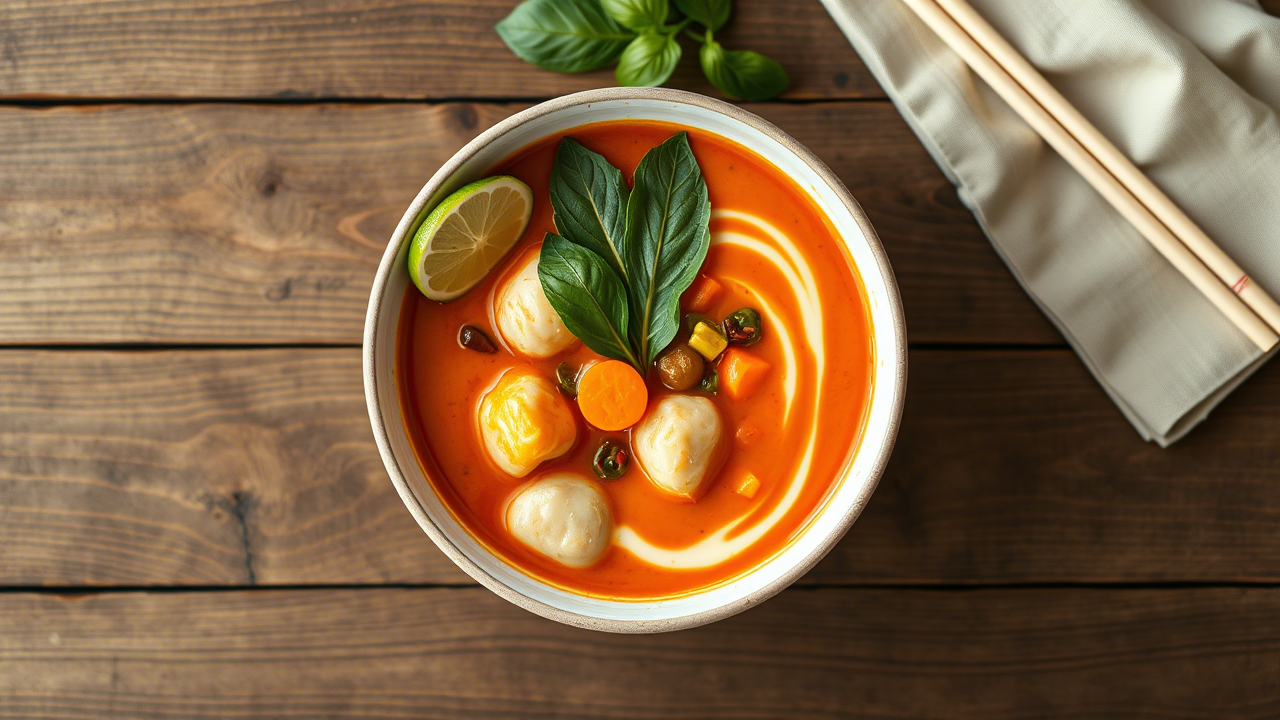There’s something about Thai red curry that just wraps around your senses like a warm hug in monsoon season. Add dumplings to that? You’re diving headfirst into a bowl of spicy, creamy, slurpy joy—where East Asian comfort food meets Southeast Asian flair. This isn’t your basic “weeknight soup.” This is an orchestrated performance in a bowl. And yet, surprisingly, it’s easy. Like, “Why haven’t I made this before?” easy.
That’s the purpose of this article—to guide you through a deeply flavorful Thai red curry dumpling soup that’s as accessible as it is intricate. You’ll get expert insights, tested tweaks, and techniques that elevate this from a shortcut meal to a serious culinary experience. Whether you’re a pro in the kitchen or a home cook with a hungry soul, this dish deserves a spot in your regular rotation.
Let’s break down this culinary sleeper hit, spoon by spoon.
Why This Soup Works So Well (And Why It Should Be in Your Repertoire)
Flavor layering. That’s what Thai cuisine does so well. Sweet, salty, sour, spicy, and umami all swirl together. And in this red curry dumpling soup, every one of those notes hits.
At its base, you’ve got a rich red curry broth—creamy from coconut milk, assertive from the curry paste, aromatic with lemongrass and kaffir lime. Floating in that are tender dumplings, which can be pork, shrimp, chicken, tofu—whatever you got. The soup’s heat is mellowed by the milk’s fat, balanced by a dash of sugar and splash of fish sauce. Garnishes like Thai basil or fried shallots take it right to the finish line.
The dumplings soak up flavor as they cook, making every bite a revelation. You slurp one down and think—did I just taste ginger, or was that galangal? The line gets blurred in the best way.
Anatomy of the Perfect Bowl
Let’s dig into the guts of it, shall we?
Red Curry Broth—The Core
If your broth’s no good, your soup’s already lost the battle. The red curry base is non-negotiable. Use a Thai brand like Mae Ploy or Maesri—these offer deeper flavor and a proper spice punch. The paste should fry in oil for a couple minutes before any liquid hits the pot. That blooming moment? That’s when your kitchen starts smelling like a Bangkok street corner at 7 p.m.
Then comes the coconut milk. Full-fat. Don’t play with that light stuff—it won’t give you the lush body or mouthfeel. About one can per 2 cups of broth is a good start. Chicken broth or veggie broth can work; just avoid plain water unless you’re desperate.
Add aromatics. Lemongrass bruised with the back of your knife, slices of galangal if you’ve got it, and kaffir lime leaves torn right down the middle. These aren’t optional—they’re what turn your soup from “good” to “oh damn.”
Fish sauce adds depth. Sugar (palm, if possible) adds contrast. Taste as you go. Thai cooking is as much about feel as it is about measurements.

The Dumplings—Your Floating Stars
Now, you can go two ways: store-bought or homemade.
Shortcut Dumplings
Frozen dumplings from the Asian section of your grocery store are fine. Look for shrimp or chicken gyoza-style dumplings with minimal filler. Drop them right into the hot broth and let them simmer for 4–5 minutes, until the wrappers are silky and the insides hot.
Homemade Magic
Want to impress your inner chef? Mix ground chicken or pork with:
- Finely chopped garlic
- Grated ginger
- Soy sauce
- A pinch of sugar
- A dash of sesame oil
- Chopped scallions or Thai basil
Wrap them in store-bought wonton wrappers. Pinch closed. No need for fancy pleats unless you’re showing off.
Steam them for 5 minutes before dropping into the soup—or just poach them directly in the broth for even more flavor absorption.
Vegetables, Texture, and Timing
Here’s where many people get it wrong—they toss in all their veg too early. Don’t do it. You’ll end up with mush.
Go for quick-cooking, flavor-holding vegetables like:
- Baby bok choy
- Snow peas
- Shredded carrots
- Mushrooms (shiitake or enoki preferably)
- Thinly sliced red bell pepper
Add these only in the last few minutes. You want bite. You want color. Nobody wants dull green bok choy—it’s just sad.
You can also add cubes of tofu for protein variety or use noodles (like rice vermicelli) for extra slurp factor. But if you do noodles, don’t overcrowd your bowl—this is a soup, not a stir-fry with sauce.
Pro Techniques That Elevate the Bowl
Okay, let’s get a bit nerdy.
- Oil bloom your curry paste: This isn’t just for flavor. It changes the paste’s chemical profile and brings out fat-soluble aromas. Don’t skip it.
- Ladle the soup over dumplings in the bowl instead of cooking everything together if you want firmer texture and visual contrast.
- Infuse your broth longer: If time allows, simmer the red curry base with aromatics for 20 minutes before adding anything else. Strain if you’re fussy.
- Chili oil or crisp on top: Just a tiny drizzle—adds heat and crunch. An absolute game-changer.
Flavor Pairing and Garnish Game
Your toppings? Think fresh herbs and acidic balance.
- Thai basil, cilantro, or mint
- Fresh lime juice—don’t skip this
- Sliced red chili or chili flakes
- Fried shallots or garlic chips
- A spoon of chili crisp for the drama
Serve with a side of sticky rice if you’re really going all in. Cold Thai tea on the side? Now we’re just showing off.

Answering the Big Questions
Can I make it vegetarian or vegan?
Yep. Use mushroom or tofu dumplings. Sub fish sauce for soy sauce plus a dash of seaweed powder or miso for depth. Use veggie broth and don’t skimp on the aromatics.
Will it keep well?
Broth, yes. Dumplings, not so much. They’ll swell and sog. Best to keep them separate until serving. Fridge the broth up to 3 days. Freeze it? Sure, but don’t freeze with dumplings in it.
Is it spicy?
Thai red curry has heat, but it’s manageable. Want less heat? Cut back on curry paste and add a bit more sugar and coconut milk.
Let’s Talk Nutrients
One bowl gives you:
- Protein from dumplings (or tofu)
- Healthy fats from coconut milk
- Vitamins from veggies
- Herbs that aid digestion
Sure, it’s not “diet food,” but it’s real food. Whole food. And it’s deeply satisfying—which is part of mental wellness too, no?
Real-World Use Cases
Thai restaurants are starting to offer red curry ramen, Thai curry noodle soups, and hybrid dishes. This curry dumpling soup fits right into that culinary evolution. It’s fusion done thoughtfully.
Catering pros? You could serve mini versions in cups with one dumpling each—bold, beautiful, and mess-free. Food truck folks? This dish sells in winter like hotcakes in a snowstorm.
Home chefs? Batch the broth. Freeze it. Drop in fresh dumplings whenever a craving hits.
Little Misconceptions to Toss Out
- Thai food isn’t “hard.” It’s intuitive once you understand balance.
- Coconut milk doesn’t curdle in soup. Not if you simmer gently.
- Dumplings in curry soup aren’t weird. They’re genius.
- You don’t need a wok or special tools. Just a big pot, a spoon, and some bravery.
Final Stir: The Takeaways
This easy Thai red curry dumpling soup is one of those dishes that gives back more than it asks. You’re not spending hours in the kitchen. You’re not sourcing rare ingredients from a back alley in Chiang Mai. But you are building flavor like a pro.
If you remember anything, let it be this:
- Always bloom your curry paste.
- Let your dumplings swim, not drown.
- Finish with acid. It’s the whisper that wakes everything up.
Add this to your weekly meal plan or pop it out for guests. Either way, someone’s going to ask, “What’s in this?” And you’ll smile, maybe lie a little, and say, “Oh, just a simple soup I threw together.”
Because that’s the magic of it. It feels like a chef’s secret. But now it’s yours.
And no, you’re not sharing the recipe. Let ‘em guess.
FAQs
What kind of dumplings work best in Thai red curry soup?
Shrimp, chicken, pork, or tofu dumplings all work—store-bought or homemade.
Can I use green or yellow curry instead of red?
Yes, but red curry offers the boldest flavor that balances best with dumplings.
Is this soup too spicy for kids?
Not if you reduce the curry paste and add more coconut milk—it mellows it out.
Can I make the broth ahead of time?
Absolutely, the broth can be made 2–3 days in advance and even frozen.
Are frozen dumplings okay to use?
Yes, just simmer them directly in the broth until heated through.
Is this soup gluten-free?
Only if your dumplings, curry paste, and soy/fish sauce are certified gluten-free.
What vegetables go well in this soup?
Bok choy, mushrooms, snow peas, carrots, and bell peppers are ideal.
How long should I cook the dumplings in the soup?
About 4–5 minutes or until they’re fully heated and tender.
Can I use light coconut milk?
You can, but full-fat coconut milk gives the best texture and richness.
What toppings work best with this soup?
Thai basil, lime juice, chili oil, cilantro, and fried shallots are perfect.

Mariana is a passionate home cook who creates delicious, easy-to-follow recipes for busy people. From energizing breakfasts to satisfying dinners and indulgent desserts, her dishes are designed to fuel both your body and hustle.
When she’s not in the kitchen, she’s exploring new flavors and dreaming up her next recipe to share with the Foodie Hustle community.

